One of the first things you notice when you walk into Duncan Channon’s 10th-floor office is the smashed Muni bus mural with the “Doom Spiral” logo in the transit agency’s iconic “Worm” font prominently displayed on its side.
Doom is everywhere you look. There’s the circular Doom Spiral Bar in the center of the space at 22 Battery St. There’s the Doom Spiral bus prop in the corner. Even the walls are painted a specific shade called Doom Blue developed with the help of Pantone.
If Parker Channon is a little obsessed with the word, it’s because, as an ad guy, he knows great branding when he sees it. And, unfortunately, in his eyes, the “Doom Loop” moniker that has attached itself to San Francisco is the stickiest kind of great branding. Unable to fight it, he’s determined to do the next best thing: subvert it.
“I remember the dot-com crash and the Great Recession, but there was never a thought that it wasn’t going to come back,” said Channon, the firm’s co-founder. “This time, the myth seemed to be ‘Oh this is it, it’s done. It’s finished. Run.’ That was what was so irritating.”
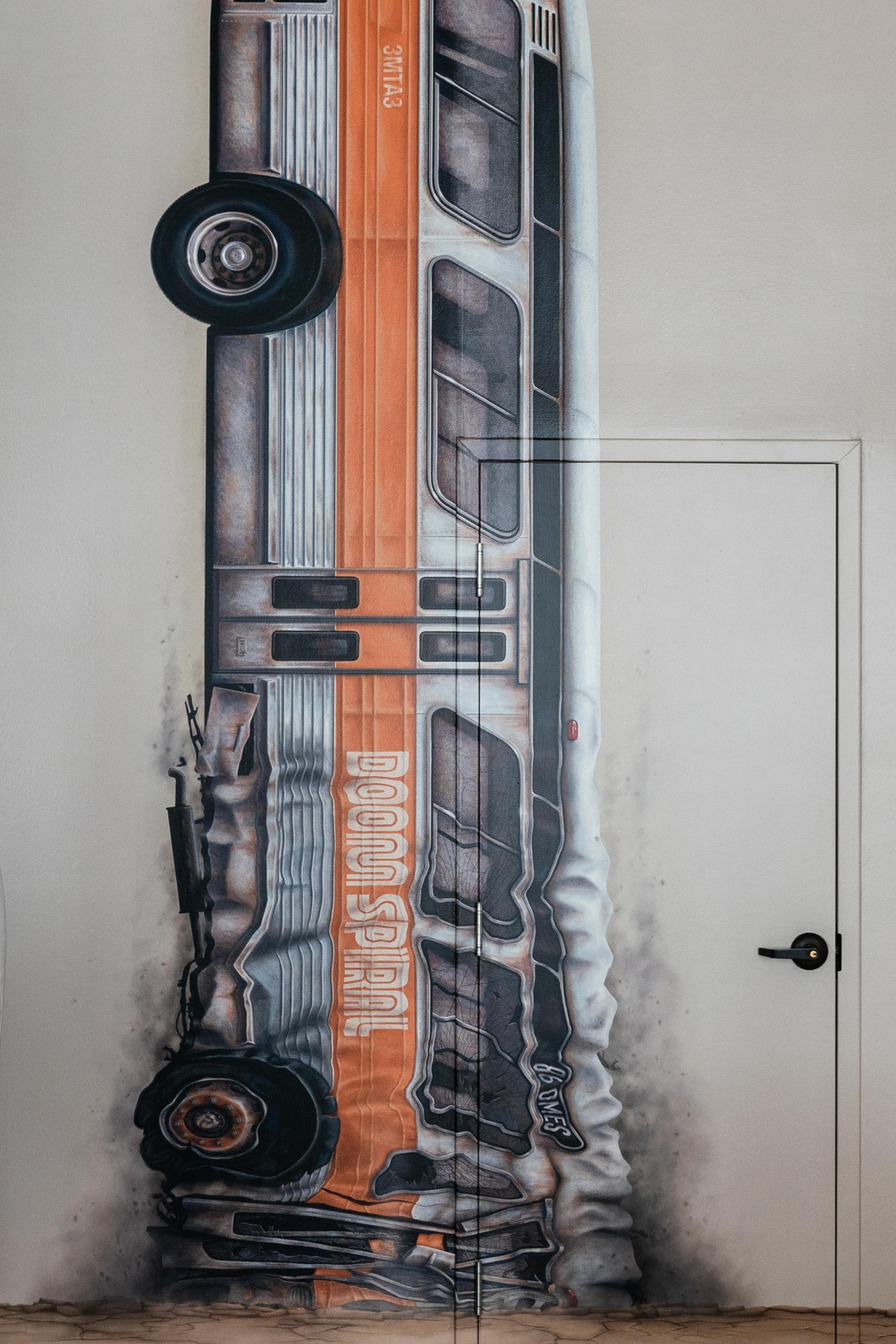
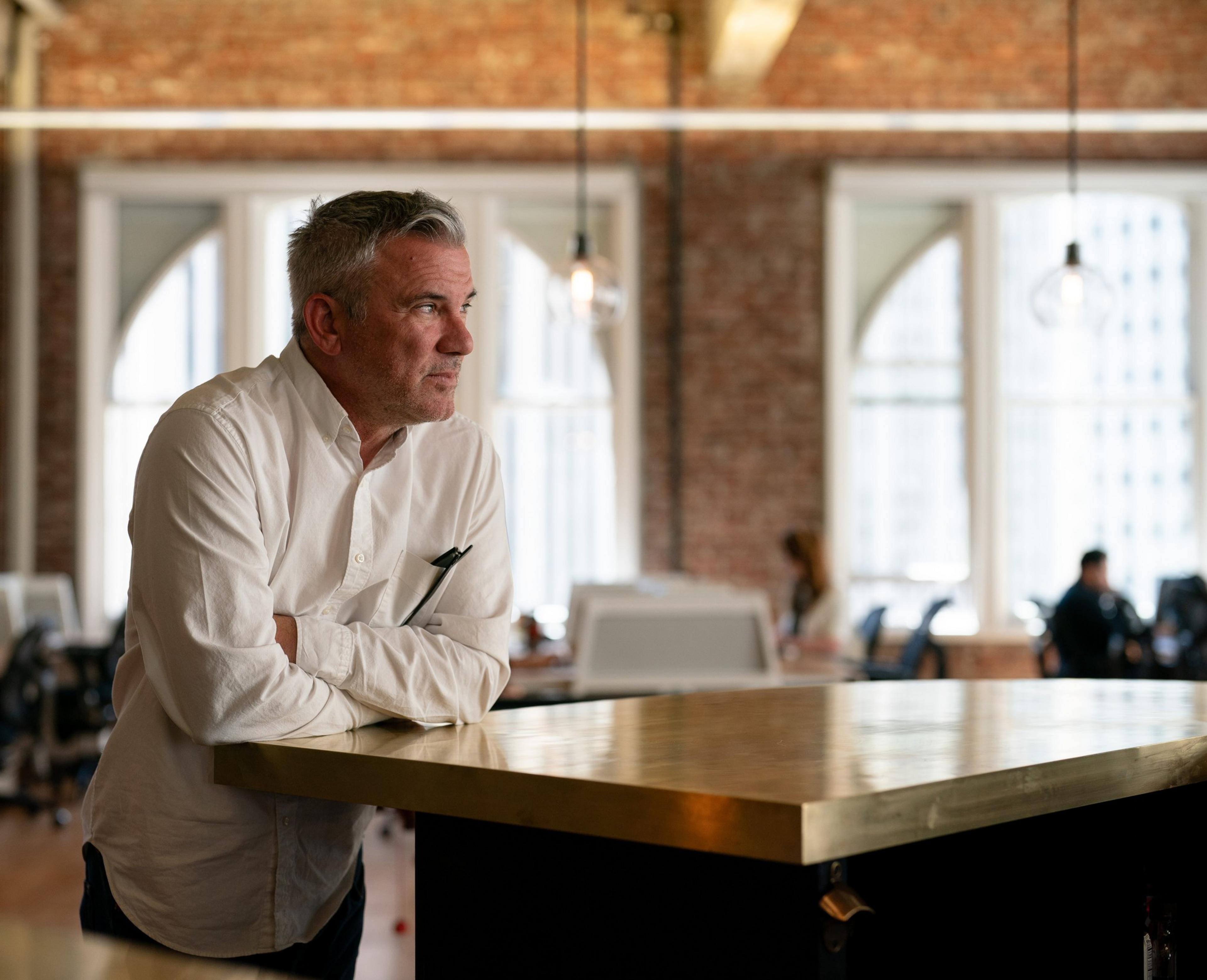
When the idea for an ironic spin on the Doom Spiral was presented to the rest of the firm, there were a few skeptics, but Channon reassured employees that it wasn’t a negative take, but rather a sendup of the city’s critics.
“It was never about making light of the situation, but it was making fun of those people who called San Francisco’s death too early again for the umpteenth time,” Channon said. “The logo for the city is a phoenix rising from the ashes.”
So why Doom Spiral versus the more oft-cited Doom Loop? The reason is relatively prosaic. The two words look better stacked in the typography that the firm’s chief creative officer reverse-engineered from Muni’s design.
Whatever it’s called, Channon fully admits that from the perspective of an advertising exec, the narrative around San Francisco has been viral to a degree that makes it hard to combat. He recounted stories of work trips to New York or a recent vacation to Italy, where the overarching response from people was pity about San Francisco’s decline and destruction.
“People believed in New York and across the country that San Francisco was done,” Channon said, adding that the tidy Doom Loop branding created a self-perpetuating cycle. “It’s become a pervasive myth. The story almost came in advance of reality.”
Mounting a comeback
The Financial District’s current status still lags behind its pre-pandemic heights amid a broad reset of the city’s commercial real estate market. But the transition has proven lucrative for some tenants, like Duncan Channon, who are committed to staying in San Francisco.
The firm decided to downsize and move offices from its previous location nearby at 114 Sansome St., where landlords refused to make concessions on rent. The company signed a five-year lease in their new building at around a quarter of the cost of their old space.
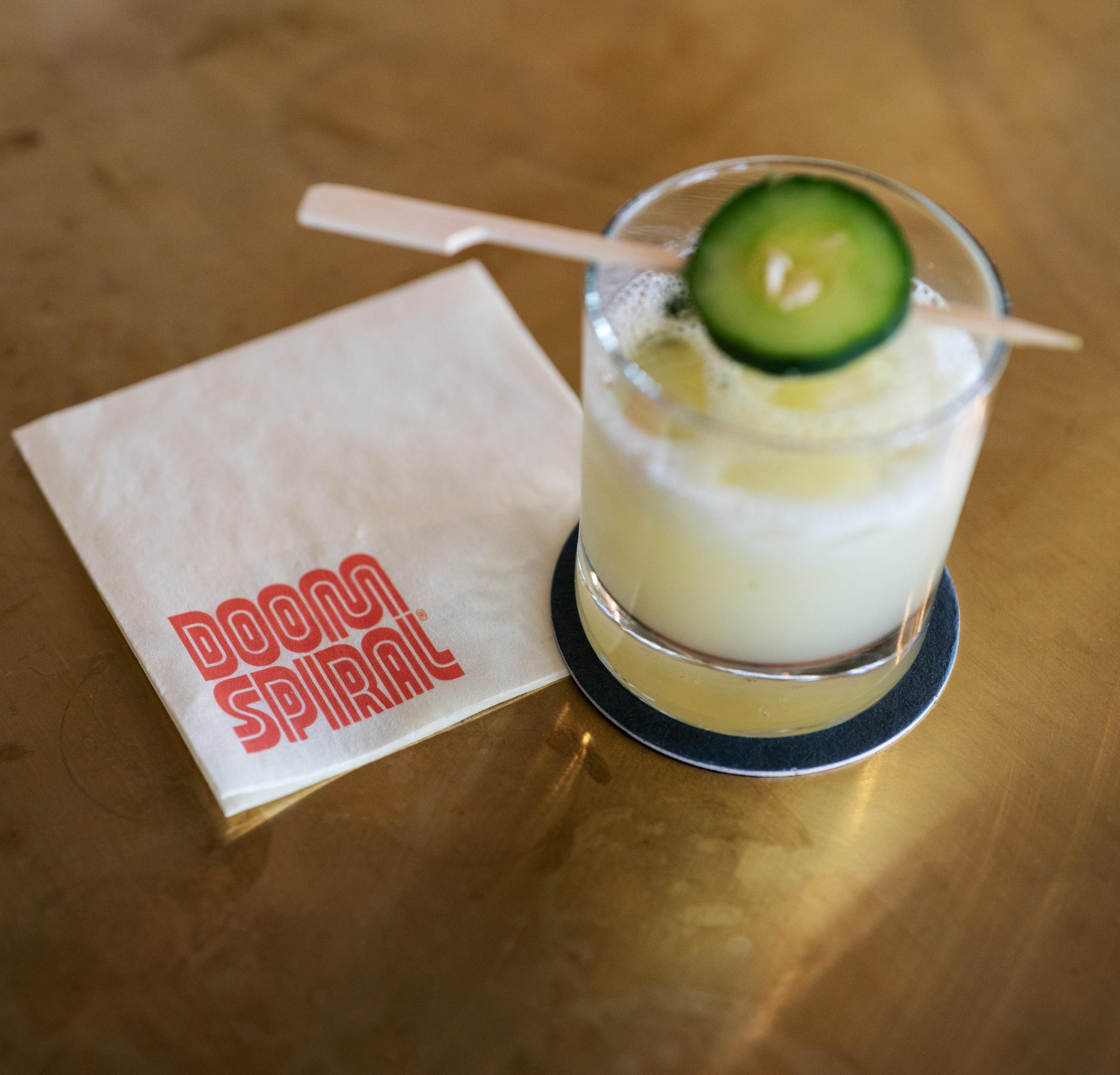
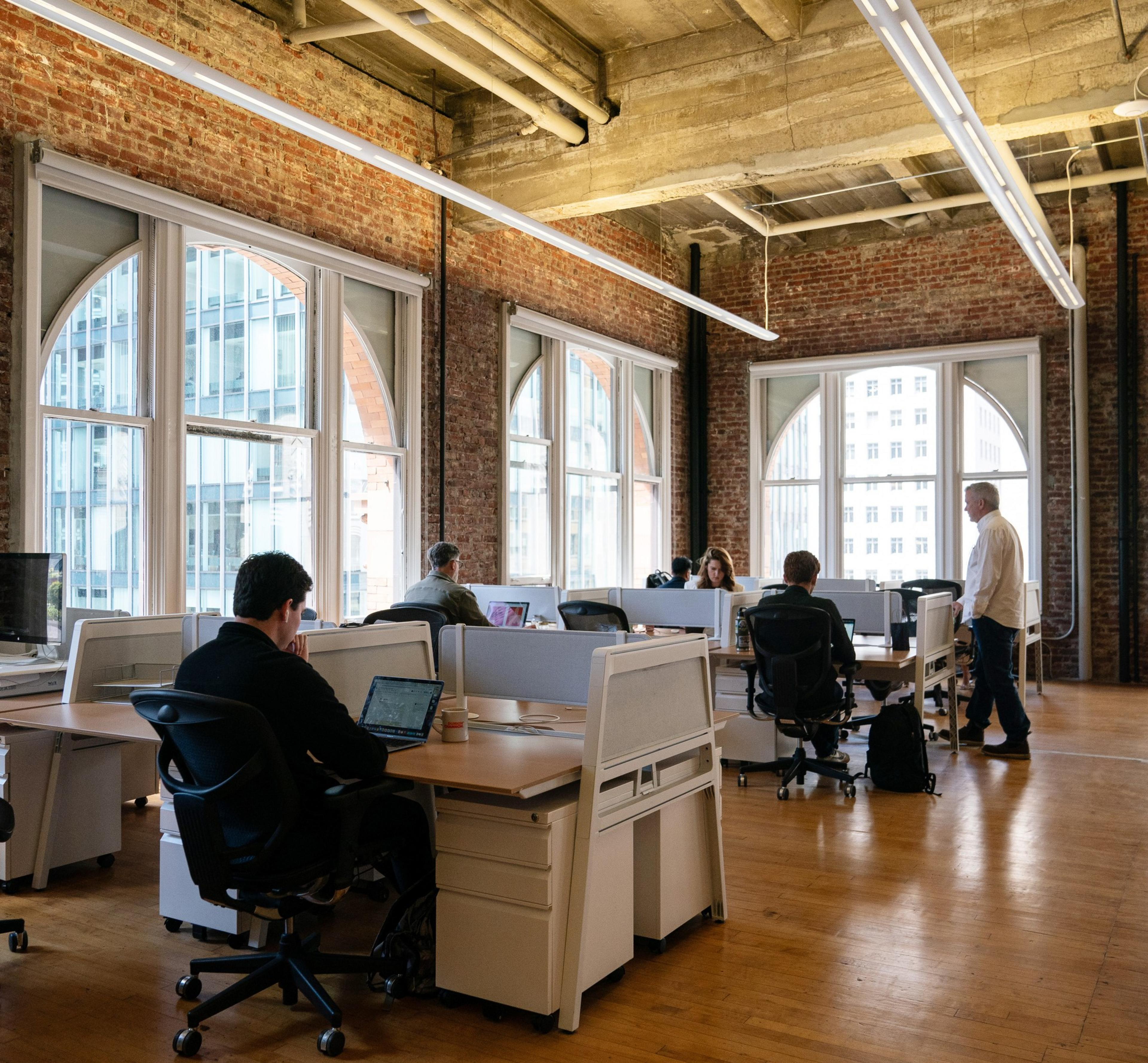
“There’s now great opportunities for creative companies to come back,” Channon said. “By and large we generally have less money than financial companies or private equity firms or the tech guys who jacked prices up.”
Hans Hansson, the listing broker for the property, said the building’s owner is focused on competing on price to attract tenants, and occupancy has gone from around 45% near the end of the pandemic to 85% today.
The increase in leasing activity has attracted new ground-floor retail tenants to the building, like Flywheel Coffee and the first San Francisco outpost of East Bay cult bagelry Boichik Bagels, slated to open later this summer.
“There’s a large amount of activity going on, but it’s mostly from smaller local groups,” Hansson said. “There’s more people on the street, and that’s making retailers more confident in coming in.”
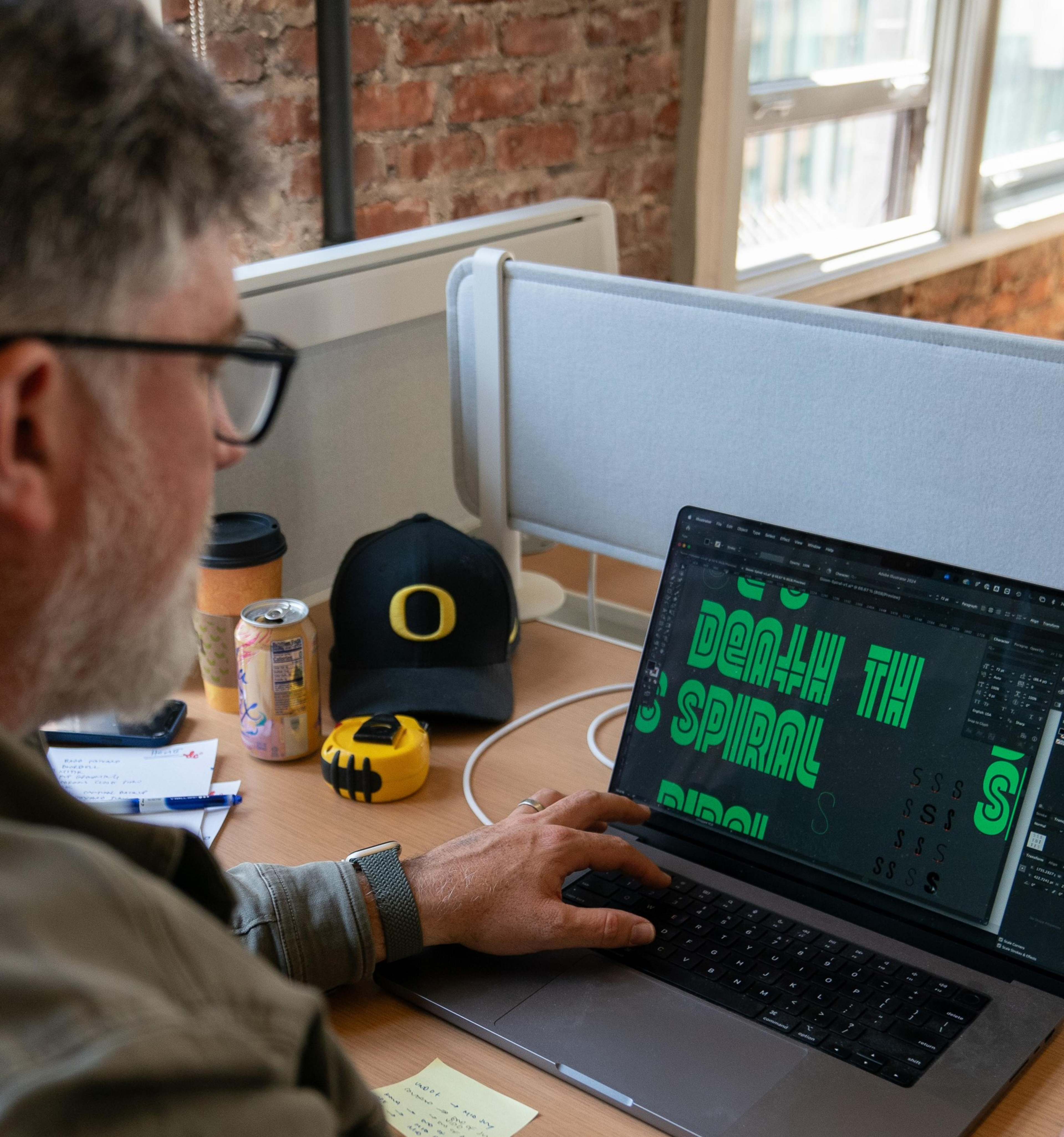
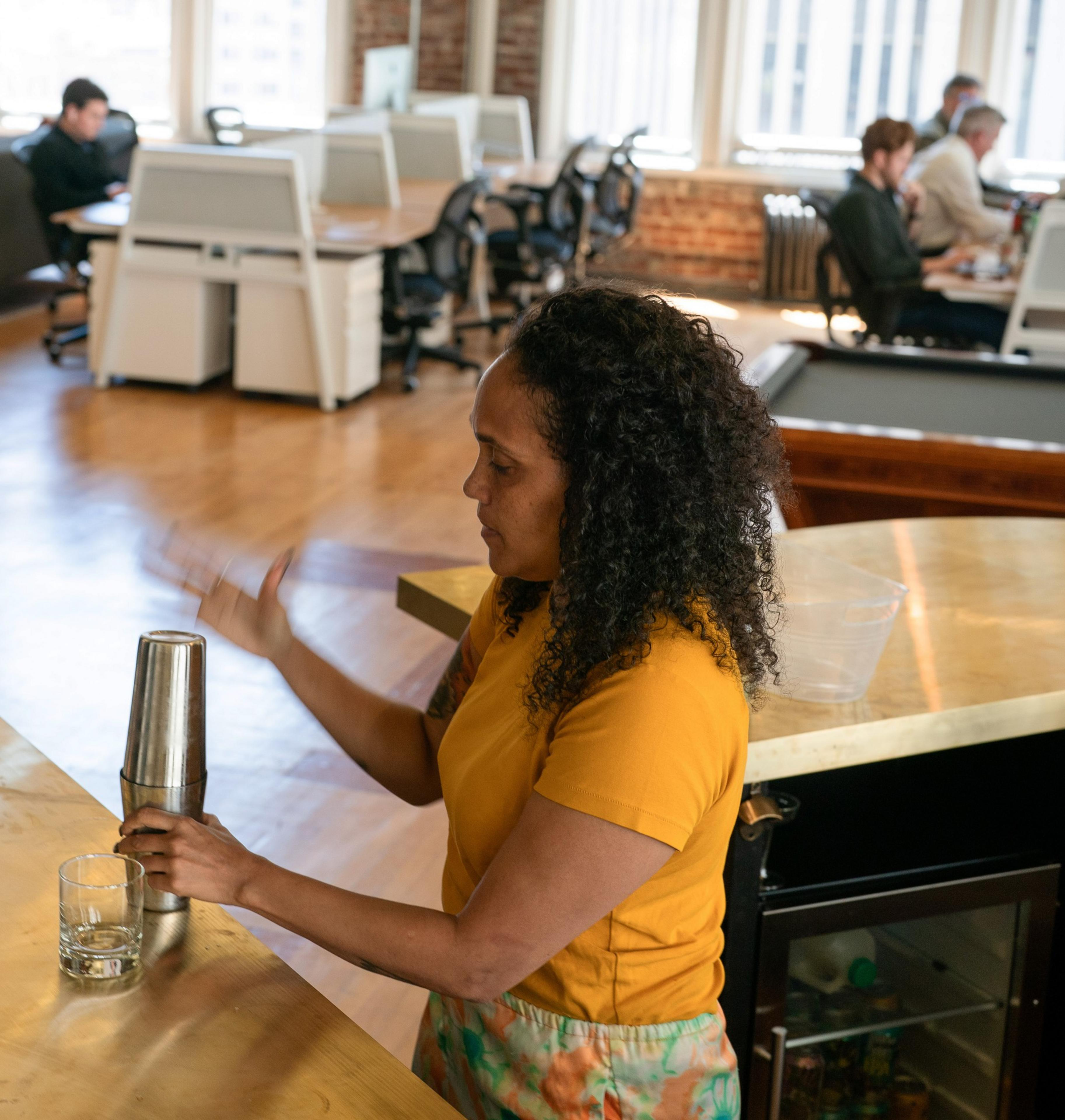
Channon took pains to say he was not downplaying the challenges faced by San Francisco, in particular, the paired crises of fentanyl and homelessness that have loomed large in the public’s conception of the city. Coincidentally, the firm is the agency of record for the California Department of Public Health’s anti-opioid campaign.
“I’m not unaware there’s an issue, but the answer to us didn’t seem to run away, but instead to come back,” Channon said.
The central bar has its own Doom Spiral-labeled cocktail napkins and coasters. Flipping over the cardboard reveals a quote from The Last Black Man in San Francisco.
In the 2019 film, the protagonist Jimmie Fails rides a Muni bus while listening to two people bash his hometown.
“You don’t get to hate it unless you love it,” he replies.
